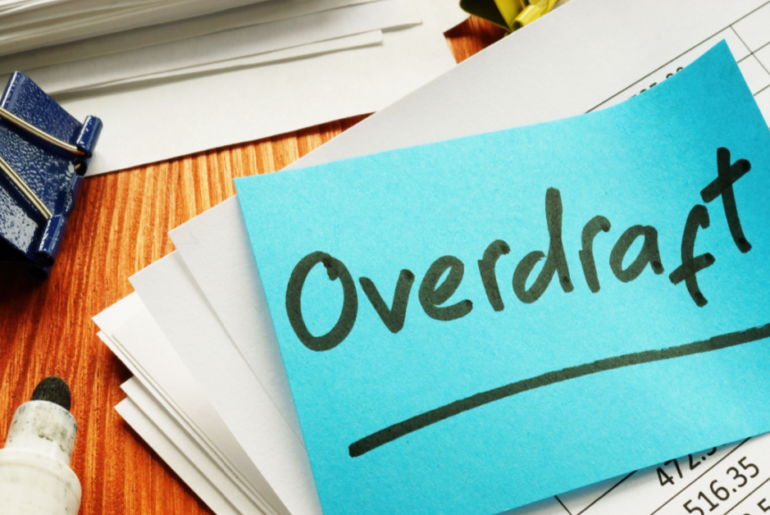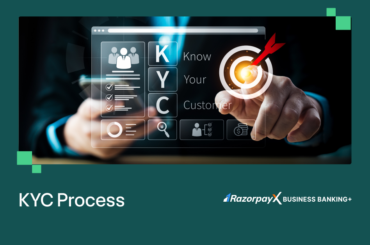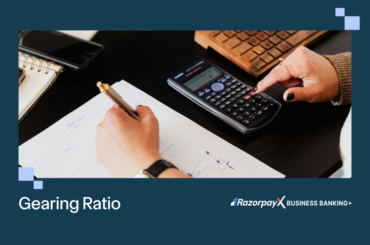Overdraft, commonly abbreviated as OD in banking terms, is one of the key features of current accounts. It is a short-term extension of credit that businesses can access without having to go through the tedious process of applying for a loan.
Whether it be taking care of short-term financial commitments when cash flows are tight, paying employees on time, or meeting working capital requirements, this feature of current accounts bails businesses out of many a tight spot.
Here’s a quick primer for those less familiar with OD. Read on!
Table of Contents
What is overdraft (OD)?
Overdraft is a bank facility that lets the account holder withdraw money from their bank account even if they don’t have a sufficient balance. Even when your bank balance is nil, if you have a current account with an OD facility, your financial institution will grant you extended credit up to a limit for a small fee.
Depending on several metrics like credit score, repayment history, and how your relationship with the bank is, you will be assigned an overdraft limit. You can withdraw funds only till the assigned limit. Your bank will be able to provide you with this facility based on the guidelines put forth by RBI.
For example, if the bank assigns your OD account a limit of Rs 50,000, you can only withdraw a maximum of Rs 50,000 after your bank balance reaches zero.
The interest rate levied on the OD facility differs from bank to bank. However, account holders are required to repay the amount to the bank within a predetermined time which is usually less than 12 months.
Note that the facility is available in both savings and current accounts offered by banks and financial institutions in India. However, it may not be as common for savings accounts as it is for current accounts.
How does it work?
The importance of business continuity and keeping the business cycle running has never been as much in the light as it is today – in the post-pandemic era, as life is getting back to normal.
This is where the overdraft facility comes in handy for small businesses.
One could say that the OD facility works like a credit card. You dip into the excess funds available to you (but to a specific limit), whenever you require, and you pay interest on the amount you used up. The interest you pay is based on your credit history and your rapport with the financial institution, among other factors.
The only difference between a credit card and an overdraft is that for the latter, you pay interest on the amount you overdraw irrespective of the repayment timeline. This is unlike the case of credit cards, where you can avoid paying interest if you pay your credit card bills on time and in line with the agreement you have with your credit card provider.
An illustration
Let’s look at it through an illustration to help you understand this better. Suppose you are a small business owner with Rs 50,000 as your account balance. There is an urgent payment that you need to make to your raw material supplier for Rs 80,000. You know there is some money coming your way from your customers, but this payment cannot wait.
In this situation, taking on a business loan does not make any sense because of all the paperwork involved and the time the financial institution will take to process the loan. Instead, it makes sense to overdraw.
Once the facility is activated, Rs 50,000 will be debited from your account, and the remaining Rs 30,000 will be paid to the vendor from the overdrawn amount, of course, depending on the permissible limits available to you as the business owner.
You may make this payment any way you want – through cheque, online transfers, or a debit card. Once sanctioned, it is essentially your money, that you can access anytime and any way to meet your short-term requirements.
You will be charged interest on the overdraft loan, i.e, on Rs 30,000, as soon as the amount is used. You will then have to repay your bank within the time specified.
Benefits of availing OD for businesses
Here’s how OD could be a blessing for your business:
- You only borrow a specific amount of money the business requires immediately and interest is charged only on the amount utilized.
- It lets you withdraw funds via multiple modes – from cheques to ATMs, through online modes and even by debit card.
- It allows you to manage cash flow in the business without having to take on a business loan. So, you can avoid the hassle of paperwork, and loan processing woes.
- Very quickly available for use, there is generally no charge on paying the amount back at the earliest. With loans, you may have to pay a foreclosure amount.
- One of the foremost advantages of the facility is that there is no collateral sought.
Disadvantages of OD for businesses
As with any feature of modern banking, OD is not without its shortcomings.
- You can only get a limited amount of funds through the facility.
- If you require more funds than your sanctioned limit, you will have to pay an extra arrangement fee.
- While the interest on a loan is charged monthly, the interest on OD is charged daily. The interest can also be slightly higher than conventional borrowing instruments.
- The sanctioned limit depends on your current financials which may restrict your access to excess funds.
- Remember that these are short-term borrowings for which interest rates may be revised every year by the bank.
- Regular overdrawing puts a dent in your credit score by acting as evidence of irresponsible financial management, poor business strength, or the inability to manage debtors.
The takeaway
OD is a benefit to businesses and individuals in more ways than one. Apart from allowing you to circumvent loan processing, you don’t have to set down collateral every time you have a short-term cash crunch.
FAQs
What is an overdraft in banking?
Overdraft is when a bank offers an account holder the facility to withdraw funds from their account even when the account balance is zero.
Is overdraft a kind of a loan?
Yes, it is a short-term loan offered by financial institutions to account holders.
Is a small business owner eligible for an overdraft?
Yes, overdrafts are best suited for self-employed and small business owners. It helps them manage their cash flow and pay their stakeholders on time when collecting dues from debtors and repayment dates of creditors have gaps between them.
Does overdraft affect the credit score?
Yes, an overdraft is a short-term loan that impacts the borrower’s credit score. Regular overdrawing puts a dent in your credit score by acting as evidence of irresponsible financial management, poor business strength, or the inability to manage debtors.





